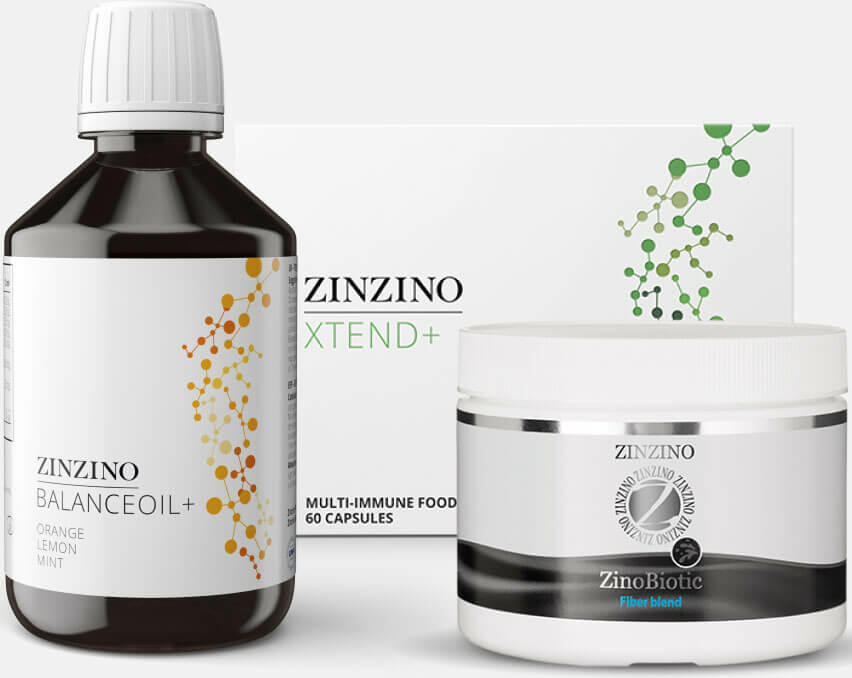Test kimliğini değiştir

Test kimliğini değiştir

Test kimliğini değiştir

Başlayalım!

Sonucunuz:
Size sunabileceğimiz daha fazla bilgi var…

Emin misiniz?


Hangi ülkedensiniz?

 Geri
Geri

Lütfen yaşınızı, ağırlığınızı ve boyunuzu girin
 Geri
Geri

Lütfen cinsiyetinizi seçin
 Geri
Geri

Are you currently pregnant or exclusively breastfeeding?
 Geri
Geri

What month of pregnancy are you in?
 Geri
Geri

Son zamanlarda herhangi bir Omega-3 takviyesi aldınız mı?
 Geri
Geri

Beslenme şeklinizi en iyi açıklayan seçenek hangisidir?
(Her şeyi tüketirim)
(Et yemiyorum)
(Yalnızca balık ve deniz ürünleri tüketirim)
(Hayvanlardan elde edilen hiçbir ürünü tüketmiyorum)
 Geri
Geri

Join Our Groundbreaking Test-Based Nutrition Study!
Important Information:
Screening Process: You'll begin by answering 6 brief questions to determine your suitability.
Suitability Notice: Only those who meet our specific study criteria will receive further details via email.
If Selected: You will be contacted with instructions and, as a thank you for your participation, you will receive a complimentary HbA1c test along with an additional test kit for the research and a questionnaire containing 15 more questions via post. Please follow the provided instructions carefully and return both the completed test kit and questionnaire as directed.
Confidentiality: All information you provide and any data we collect will be handled in a strictly confidential manner. Your data will be de-identified so that your test results cannot be linked to your personal information and will be used solely for research purposes.
Voluntary Withdrawal: You may withdraw from the study at any time by sending an email to research@zinzino.com.
Would you like to contribute to shaping the future of test-based nutrition?
 Geri
Geri

Thank you for your interest and for playing a vital role in advancing nutrition research!
Have you been taking Xtend or Xtend+, according to the recommended dose (at least 2 tablets per day), for at least the past 2 weeks?
 Geri
Geri

Have you been taking Zinobiotic+ according to the recommended dosage (2 scoops per day) for at least the past 2 weeks?
 Geri
Geri

How would you describe your BalanceOil+ consumption over the past 120 days?
 Geri
Geri

Over the next 30 days, do you plan to maintain the same consumption pattern for your Zinzino Health Protocol products as you reported above? (For example, if you currently do not use a product, select 'Yes' if you plan to continue not using it.)"
 Geri
Geri

Have you taken antibiotics in the past month?
 Geri
Geri

Have you taken laxatives in the past month?
 Geri
Geri

Please provide your email and address below so we can contact you and send out test-kits if you are selected for the study.
 Geri
Geri

Gizliliğinizi koruyoruz
Ne tür bir Omega-3 takviyesiydi?
 Geri
Geri

Başlayalım!

 Hayır Sonucunuzu almadan önce soruları yanıtlamak istemiyorsanız bu adımı atlayabilirsiniz.
Hayır Sonucunuzu almadan önce soruları yanıtlamak istemiyorsanız bu adımı atlayabilirsiniz.
Emin misiniz?



Hangi ülkedensiniz?
 Geri
Geri

Lütfen yaşınızı, ağırlığınızı ve boyunuzu girin
 Geri
Geri

Lütfen cinsiyetinizi seçin
 Geri
Geri

Are you currently pregnant or exclusively breastfeeding?
 Geri
Geri

What month of pregnancy are you in?
 Geri
Geri

Son zamanlarda herhangi bir Omega-3 takviyesi aldınız mı?
 Geri
Geri

Beslenme şeklinizi en iyi açıklayan seçenek hangisidir?
(Her şeyi tüketirim)
(Et yemiyorum)
(Yalnızca balık ve deniz ürünleri tüketirim)
(Hayvanlardan elde edilen hiçbir ürünü tüketmiyorum)
 Geri
Geri

Join Our Groundbreaking Test-Based Nutrition Study!
Important Information:
Screening Process: You'll begin by answering 6 brief questions to determine your suitability.
Suitability Notice: Only those who meet our specific study criteria will receive further details via email.
If Selected: You will be contacted with instructions and, as a thank you for your participation, you will receive a complimentary HbA1c test along with an additional test kit for the research and a questionnaire containing 15 more questions via post. Please follow the provided instructions carefully and return both the completed test kit and questionnaire as directed.
Confidentiality: All information you provide and any data we collect will be handled in a strictly confidential manner. Your data will be de-identified so that your test results cannot be linked to your personal information and will be used solely for research purposes.
Voluntary Withdrawal: You may withdraw from the study at any time by sending an email to research@zinzino.com.
Would you like to contribute to shaping the future of test-based nutrition?
 Geri
Geri

Thank you for your interest and for playing a vital role in advancing nutrition research!
Have you been taking Xtend or Xtend+, according to the recommended dose (at least 2 tablets per day), for at least the past 2 weeks?
 Geri
Geri

Have you been taking Zinobiotic+ according to the recommended dosage (2 scoops per day) for at least the past 2 weeks?
 Geri
Geri

How would you describe your BalanceOil+ consumption over the past 120 days?
 Geri
Geri

Over the next 30 days, do you plan to maintain the same consumption pattern for your Zinzino Health Protocol products as you reported above? (For example, if you currently do not use a product, select 'Yes' if you plan to continue not using it.)"
 Geri
Geri

Have you taken antibiotics in the past month?
 Geri
Geri

Have you taken laxatives in the past month?
 Geri
Geri

Please provide your email and address below so we can contact you and send out test-kits if you are selected for the study.
 Geri
Geri

Testiniz hazır olduğunda bildirim almak istiyor musunuz?
 Geri
Geri

Gizliliğinizi koruyoruz
Bildirimleri etkinleştir
 Geri
Geri

Ne tür bir Omega-3 takviyesiydi?
 Geri
Geri

Test sonuçlarınız henüz hazır değil.
Yanıtlarınız için teşekkür ederiz!

Çok üzgünüz!
Formunuz zaten gönderildi.
Daha fazla sorunuz varsa lütfen müşteri destek birimiyle iletişime geçin
Müşteri Destek Birimi
Gönderdiğiniz örnekte çok az kan vardı.
Kan örneğiniz zarfta yoktu
Başlayalım!

 Hayır D vitamini durumunuza dair değerlendirmeyi almadan önce soruları yanıtlamak istemiyorsanız bu adımı atlayabilirsiniz.
Hayır D vitamini durumunuza dair değerlendirmeyi almadan önce soruları yanıtlamak istemiyorsanız bu adımı atlayabilirsiniz.
Emin misiniz?


Hangi ülkedensiniz?
 Geri
Geri

Lütfen yaşınızı, ağırlığınızı ve boyunuzu girin
 Geri
Geri

Lütfen cinsiyetinizi seçin
 Geri
Geri

Son zamanlarda D vitamini içeren herhangi bir takviye aldınız mı?
 Geri
Geri

Beslenme şeklinizi en iyi açıklayan seçenek hangisidir?
(Her şeyi tüketirim)
(Et yemiyorum)
(Yalnızca balık ve deniz ürünleri tüketirim)
(Hayvanlardan elde edilen hiçbir ürünü tüketmiyorum)
 Geri
Geri

Daha önce Zinzino D Vitamini Testi uygulamış mıydınız?
 Geri
Geri

Yardımınıza ihtiyacımız var
 Geri
Geri

Testiniz hazır olduğunda bildirim almak istiyor musunuz?
 Geri
Geri

Lütfen önceki D Vitamini Testi kimliğinizi girin
 Geri
Geri

Önceki testinizden beri günlük dozunuzda herhangi bir DEĞİŞİKLİK yapıp yapmadığınızı belirtin.
D Vitamini takviyesindeki artış ve azalmayı girin
 Geri
Geri

Takviyeleri hangi sıklıkla aldınız?
ZinoShine+
gün, haftalık
Xtend/Xtend+
gün, haftalık
BalanceOil+/Vegan/AquaX
gün, haftalık
Protect+
gün, haftalık
Essent (softgels)
gün, haftalık
Another supplier
gün, haftalık
 Geri
Geri

Gizliliğinizi koruyoruz
Bildirimleri etkinleştir


 Geri
Geri

Ürün seçin
| ZinoShine+ |
0
|
kez/hafta |
| Xtend/Xtend+ |
0
|
kez/hafta |
| BalanceOil+/Vegan/AquaX |
0
|
kez/hafta |
| Protect+ |
0
|
kez/hafta |
| Essent+ (softgels) |
0
|
kez/hafta |
| Başka bir tedarikçiden - kez/hafta |
0
|
kez/hafta |
 Geri
Geri

Sonucunuz:
Size sunabileceğimiz daha fazla bilgi var…

Test sonuçlarınız henüz hazır değil.
Yanıtlarınız için teşekkür ederiz!
Başlayalım!

 Hayır D vitamini durumunuza dair değerlendirmeyi almadan önce soruları yanıtlamak istemiyorsanız bu adımı atlayabilirsiniz.
Hayır D vitamini durumunuza dair değerlendirmeyi almadan önce soruları yanıtlamak istemiyorsanız bu adımı atlayabilirsiniz.
Emin misiniz?


Hangi ülkedensiniz?
 Geri
Geri

Lütfen yaşınızı, ağırlığınızı ve boyunuzu girin
 Geri
Geri

Lütfen cinsiyetinizi seçin
 Geri
Geri

Son zamanlarda D vitamini içeren herhangi bir takviye aldınız mı?
 Geri
Geri

Beslenme şeklinizi en iyi açıklayan seçenek hangisidir?
(Her şeyi tüketirim)
(Et yemiyorum)
(Yalnızca balık ve deniz ürünleri tüketirim)
(Hayvanlardan elde edilen hiçbir ürünü tüketmiyorum)
 Geri
Geri

Daha önce Zinzino D Vitamini Testi uygulamış mıydınız?
 Geri
Geri

Yardımınıza ihtiyacımız var
 Geri
Geri

Testiniz hazır olduğunda bildirim almak istiyor musunuz?
 Geri
Geri

Lütfen önceki D Vitamini Testi kimliğinizi girin
 Geri
Geri

Önceki testinizden beri günlük dozunuzda herhangi bir DEĞİŞİKLİK yapıp yapmadığınızı belirtin.
D Vitamini takviyesindeki artış ve azalmayı girin
 Geri
Geri

Takviyeleri hangi sıklıkla aldınız?
ZinoShine+
gün, haftalık
Xtend/Xtend+
gün, haftalık
BalanceOil+/Vegan/AquaX
gün, haftalık
Protect+
gün, haftalık
Essent (softgels)
gün, haftalık
Another supplier
gün, haftalık
 Geri
Geri

Gizliliğinizi koruyoruz
Bildirimleri etkinleştir


 Geri
Geri

Ürün seçin
| ZinoShine+ |
0
|
kez/hafta |
| Xtend/Xtend+ |
0
|
kez/hafta |
| BalanceOil+/Vegan/AquaX |
0
|
kez/hafta |
| Protect+ |
0
|
kez/hafta |
| Essent+ (softgels) |
0
|
kez/hafta |
| Başka bir tedarikçiden - kez/hafta |
0
|
kez/hafta |
 Geri
Geri

Sonucunuz:
Size sunabileceğimiz daha fazla bilgi var…

Test sonuçlarınız henüz hazır değil.
Yanıtlarınız için teşekkür ederiz!
Çok üzgünüz!
Formunuz zaten gönderildi.
Daha fazla sorunuz varsa lütfen müşteri destek birimiyle iletişime geçin
Müşteri Destek Birimi
Gönderdiğiniz örnekte çok az kan vardı.
Kan örneğiniz zarfta yoktu














Teşekkür ederiz! Yanıtlarınızı aldık




 Önceki
Önceki


 Önceki
Önceki


 Önceki
Önceki


 Önceki
Önceki


 Önceki
Önceki


 Önceki
Önceki


 Önceki
Önceki









 Önceki
Önceki



Tarih:
Ülke:
Cinsiyet:

 Önceki
Önceki


 Önceki
Önceki



Tarih:
Ülke:
Cinsiyet:

 Önceki
Önceki


 Önceki
Önceki


 Önceki
Önceki


 Önceki
Önceki


 Önceki
Önceki


 Önceki
Önceki


 Önceki
Önceki


 Önceki
Önceki


 Önceki
Önceki


 Önceki
Önceki


 Önceki
Önceki


 Önceki
Önceki


 Önceki
Önceki


 Önceki
Önceki


 Önceki
Önceki


 Önceki
Önceki


 Önceki
Önceki





 Önceki
Önceki












































Çok üzgünüz!
Formunuz zaten gönderildi.
Daha fazla sorunuz varsa lütfen müşteri destek birimiyle iletişime geçin
Müşteri Destek Birimi
Gönderdiğiniz örnekte çok az kan vardı.
Kan örneğiniz zarfta yoktu
According to EFSA:
1. DHA contributes to the maintenance of normal brain function
2. EPA and DHA contribute to the normal function of the heart
According to EFSA, vitamin D:
3. contributes to normal absorption/utilization of calcium and phosphorus
4. contributes to normal blood calcium levels
5. contributes to the maintenance of normal bones
6. contributes to the maintenance of normal muscle function
7. contributes to the maintenance of normal teeth
8. contributes to the normal function of the immune system
9. has a role in the process of cell division

-
BalanceTest
-
D Vitamini Testi
-
HbA1c Testi
zinzino.com
Test kimliğinizi girin
-
Detaylı Bilgi
-
Products
-
Detaylı Bilgi
-
Bağlantılar ve İndirmeler
-
Ürünler




